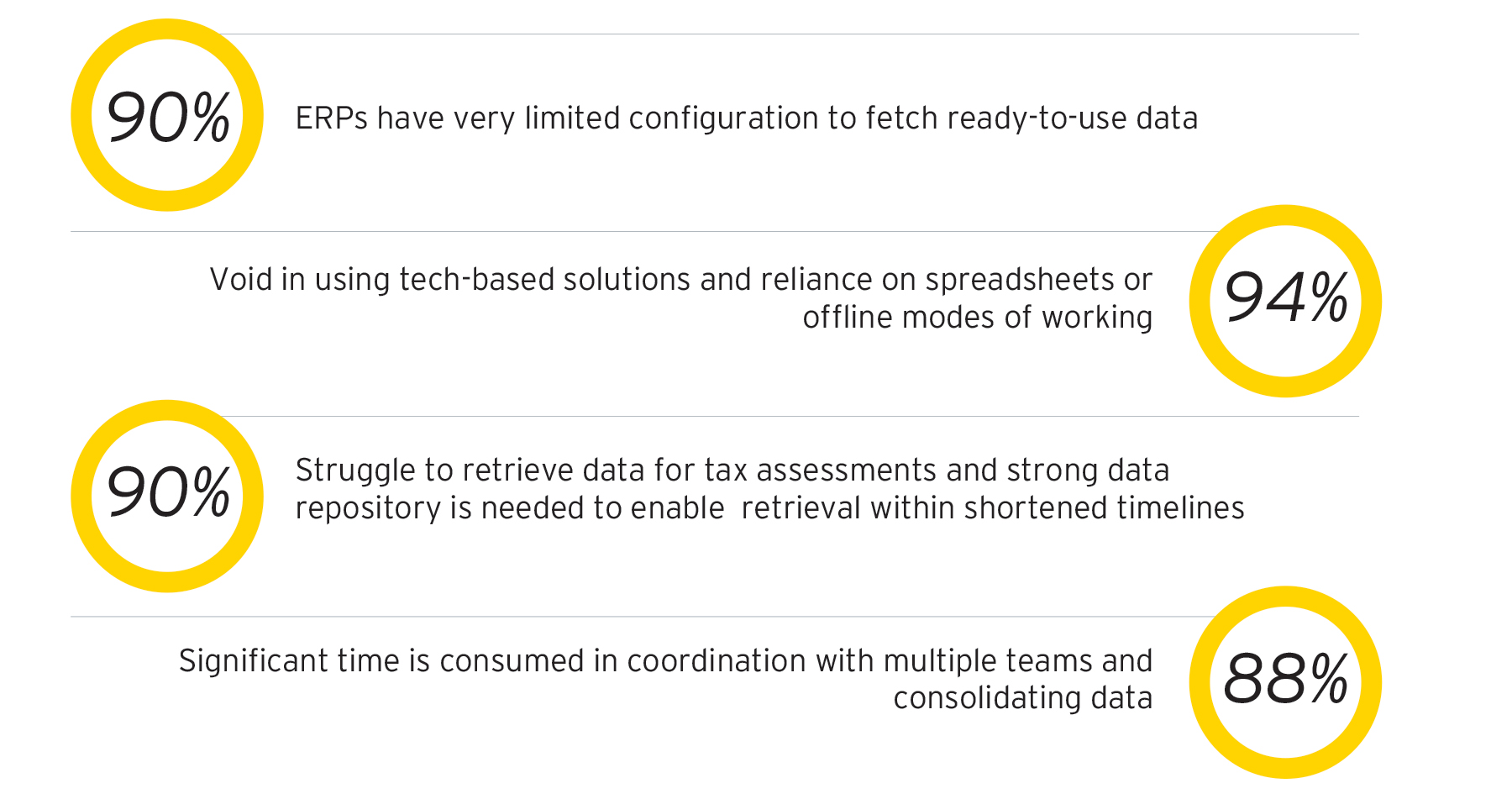To prepare for this future ready tax administration, the focus on process improvements across different business functions (including finance and tax) with technology as the enabler, is more than ever. As businesses continue to expand and navigate through the ever-evolving regulatory environment, adopting innovative technologies has become crucial for organizations to remain compliant while optimizing their tax processes. The recipe for success of a future ready tax function would be by adopting technologies which follow consistent design principles to enable automation of all facets of tax legislations (validations, computations, compliances and reconciliations) on a single platform.
In terms of technology adoption, GST has seen the highest uptick followed by TDS and TCS processes. However, it is time for India Inc to reimagine its corporate tax compliance and reporting lifecycle, which has thus far operated manually with significant people dependency. Some of the operational challenges which surround a typical corporate tax compliance lifecycle include:
a. Integration and data extraction: Complex businesses face challenges while integrating new technology with their existing systems and processes. Further, the ability to pull data from ERPs in the reporting format expected by the authorities is a problem which generally remains unsolved.
b. Complex laws and data sources: Generally, compliances around Tax audit and tax return filing involve fair bit of interpretation of tax positions and adjusting which require user discretion at multiple instances. These also include screening through various data sources, applying tax logics which at times cannot be standardized for a solution to automate.
c. Legislative changes: Keeping up with rapidly evolving tax regulations and ensuring technology compliance can be a daunting task.
To sum up, use of technology in corporate tax processes is no more a matter of choice; on the contrary, it has become a necessity for businesses in India. The ever-changing regulatory landscape demands more efficient, accurate, and streamlined processes.
The above sentiment is also reciprocated in one of the EY survey done with 100+ companies in 2022 on key challenges faced by them in tax compliances and reporting.




